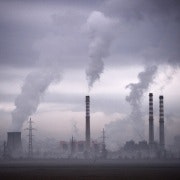Don't hold your breath for a coherent energy policy
Vive la difference is just fine when celebrating diversity, but it’s nothing more than a pain in the proverbial when it comes to advancing energy policy.
If you are mad enough to read the submissions to the federal government’s energy white paper process -- I have managed to wade through three dozen so far, plus skimming about another five dozen out of 256 -- then the abyss of understanding between players emerges as one of the big energy issues.
Those making submissions may hope the government will referee these skirmishes, but this ain’t necessarily going to be what happens.
The submissions may inform the bureaucrats drafting a green paper for publication in the coming months, but the position adopted by ministers is what will finally count. It’s politics, stupid!
The real business only starts when senior ministers -- and many in industry expect this will include the prime minister and his office, distracted as they will be by the pressures of the federal budget -- wade through the screed delivered by the bureaucrats.
(An early insight in to their thinking may be gleaned from industry minister Ian Macfarlane’s presentation to the annual Australian Petroleum Production & Exploration Association conference in Perth in the first week of April.)
The emotions and/or opinions of the non-political players will then matter again because they will inform what those of us on the outside get to hear on the green paper through the media. How we react will eventually feed through to what the pollies glean from their focus groups -- an influence not to be underestimated.
How will this eventually impact on the white paper? Who knows? Six months is a very long time in politics.
Meanwhile, energy prices continue to rise, moderately for electricity (unless you are a Queensland customer), and sharply for New South Wales gas.
These increases are all the more irritating for the hoi polloi (that’s you and me, not the upper classes) because explanations presented in the media are mostly no more than caricatures, or 'gold-plating'.
Average retail power bills have risen 40 per cent nationally over four years and 60 per cent in some states. For all the talk of the increases 'moderating', the bills are actually still going up. Consumers (aka voters) know it and they don’t like it.
As with power, so too with gas. Customers are unhappy, since they know the present rises are obviously just the start, and governments have nothing at all to offer to ameliorate the spikes while the blue over coal seam gas development in New South Wales rolls on.
The Greens assert that it is wrong for the energy industry to blame higher gas prices on protestors baulking new CSG development, and they play the xenophobe card on LNG exports. The gas suppliers retort that if they don’t think rises in the cost of finding and producing gas have an impact on end-user bills, they’re dreaming. Plus, without the lure of LNG sales, the methane would mostly stay in the ground.
The fact is that the proposed 25 per cent increase in New South Wales mass-market gas bills from July 1 represents a contract price for the fuel of about $7 per gigajoule -- it was around $4 at the start of the decade -- and wholesale prices seem on track to reach $10/GJ.
Is the federal energy white paper the place to dissect the cause and effect of this situation?
Sure. But how does another bale of paper -- the last EWP was 350 pages -- appearing around November resolve the price problem? Let alone the prospect of actual physical supply shortages in New South Wales that can be expected during excessively cold winter days later this decade.
In a well-ordered world, the New South Wales government could produce a decent, independent report on what’s going on and the state parliament could debate both the report and what the government plans to do about it.
One could hope for at least some meeting of mainstream political minds to the benefit of the wider community.
Fat chance.
On gas supply and gas prices in NSW, 'well-ordered' is the last description of the political process that comes to mind.
The disarray is as bad on the Labor side as it is in government.
Labor’s latest carry-on is pathetic, running behind the Greens about a relatively minor issue of poor design years ago of a pond near the Pilliga by a company now out of the picture.
So where does it all end?
On present indications, it certainly doesn’t end in the long-term interest of the consumers.
Keith Orchison, director of consultancy Coolibah Pty Ltd, publisher of the This is Power blog and editor of OnPower newsletter, was chief executive of two national energy associations from 1980 to 2003. he was made a member of the Order of Australia in 2004 for services to the energy industry.
















